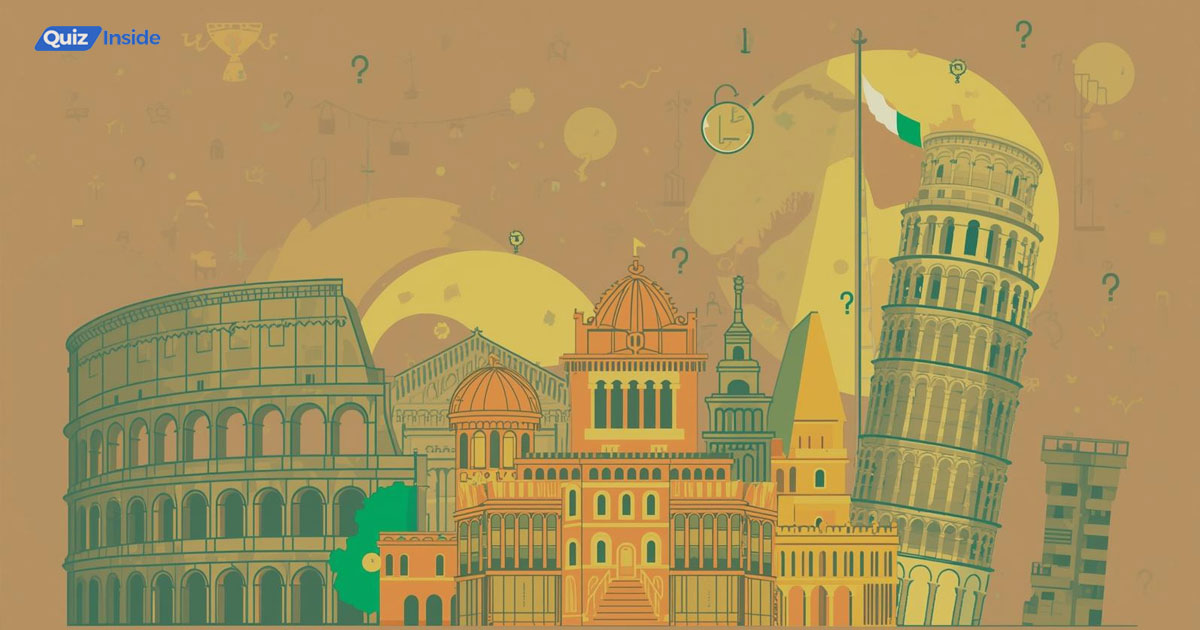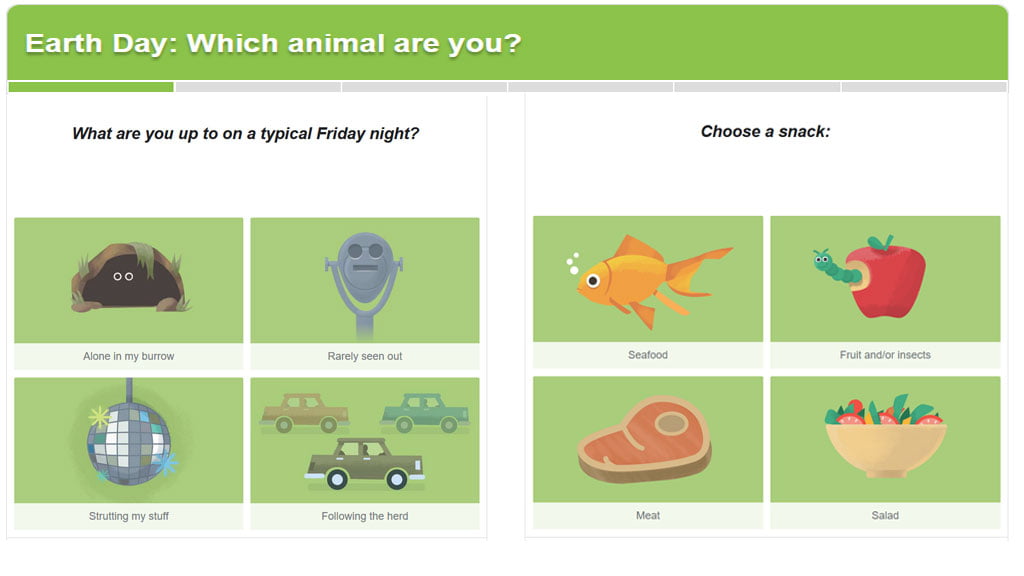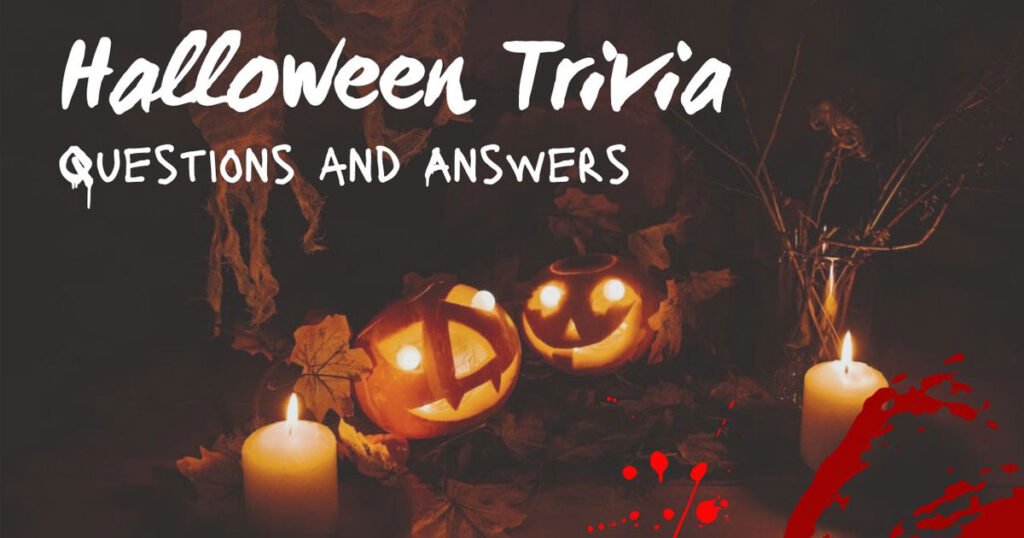From ancient Roman ruins to modern-day culinary traditions, Italy is a treasure trove of fascinating facts. This article will challenge your knowledge of one of the world’s most beloved countries, proving that there’s always something new to learn about the land of pasta and passion.
Introduction: Why Italy Captivates the World
Italy. The very name evokes images of sun-drenched vineyards, ancient gladiators, and plates of delicious pasta. It’s a country of immense historical significance, breathtaking artistry, and a vibrant culture that places a high value on family, food, and life’s simple pleasures. But beyond the well-known landmarks and cinematic landscapes lies a wealth of lesser-known facts and stories that truly define the nation.
This article is crafted as an engaging trivia journey, designed not just to test your knowledge but to deepen your appreciation for all things Italian. Whether you’re a seasoned traveler or an armchair explorer, prepare to be surprised by the rich tapestry of history and culture that makes Italy so utterly unique.
Our adventure will take us from the grand history of the Roman Empire to the distinct regional cuisines of the modern era. We’ll uncover the secrets behind iconic landmarks, the origins of famous dishes, and the quirky traditions that make Italy a country like no other. So, grab a caffè and get ready to test your wit. Let’s see how much you truly know about the Bel Paese.
Italy Trivia Questions And Answers
Geography & Regions
Trivia about Italy’s regions, cities, islands, and physical geography.
Q: What is the capital city of Italy?
A: Rome
Q: Which Italian region is home to Venice, Verona, and Padua?
A: Veneto
Q: What is the highest mountain in Italy (on mainland)?
A: Mont Blanc (Monte Bianco) — shared with France
Q: Which Italian region is famous for its canals and lagoon city?
A: Veneto (Venice)
Q: What is the name of the Italian island located to the west of mainland, known for being the largest Mediterranean island?
A: Sicily
Q: Which region is Italy’s boot heel area, forming the “spur” of the country?
A: Apulia (Puglia)
Q: What is the narrow strait dividing Sicily from the Italian mainland?
A: Strait of Messina
Q: What region is Florence (Firenze) the capital of?
A: Tuscany
Q: What is the Italian term for the region of “Lombardy”?
A: Lombardia
Q: Which region is at the very northern tip of Italy and borders Austria and Switzerland?
A: Trentino‑Alto Adige / Südtirol
History & Politics
Questions about Italy’s past, unification, government, and political milestones.
Q: In what year was the Kingdom of Italy officially proclaimed, marking Italian unification?
A: 1861
Q: Who is considered the “Father of the Fatherland” (Padre della Patria) in Italy for his role in unification?
A: Giuseppe Garibaldi
Q: Which dictator led Italy from 1922 until 1943?
A: Benito Mussolini
Q: After World War II, in 1946 Italy abolished its monarchy by referendum. What form of government replaced it?
A: Republic
Q: Who was Italy’s first female Prime Minister, albeit briefly, in 1974 (acting)?
A: Tina Anselmi
Q: What is the name of the national parliament of Italy (the two houses)?
A: The Parliament consists of the Chamber of Deputies (Camera dei Deputati) and the Senate (Senato)
Q: In what year did Rome become the capital of the unified Kingdom of Italy, replacing Turin?
A: 1871
Q: Italy was part of which major alliance during World War II before switching sides in 1943?
A: The Axis Powers
Q: Which Italian city was the birthplace of Christopher Columbus (Colombo)?
A: Genoa
Q: Who was the first President of the Italian Republic (1948–1955)?
A: Enrico De Nicola
Art & Architecture
Famous artists, architectural marvels, and artistic heritage in Italy.
Q: Which Renaissance artist painted the ceiling of the Sistine Chapel?
A: Michelangelo
Q: What is the name of the famous leaning tower located in Pisa?
A: The Leaning Tower of Pisa
Q: Who painted the Mona Lisa, which is on display in the Louvre but created in Italy?
A: Leonardo da Vinci
Q: What is the name of the ancient Roman amphitheater located in Rome?
A: The Colosseum
Q: Which Italian city is famous for its canals, Gothic palaces, and St. Mark’s Basilica?
A: Venice
Q: What is the name of the cathedral in Florence with the distinctive red dome?
A: Florence Cathedral (Il Duomo, Santa Maria del Fiore)
Q: Which sculptor created the statue of David in Florence?
A: Michelangelo
Q: The Uffizi Gallery, one of the world’s most famous art museums, is located in which city?
A: Florence
Q: Which famous architect designed St. Peter’s Basilica in Vatican City (in part)?
A: Michelangelo also contributed, and Donato Bramante, Carlo Maderno, Gian Lorenzo Bernini were among others
Q: What is the name of the Roman aqueduct located near Rome, known as “Aqua Claudia” or “Aqua Anio Novus”?
A: Aqua Claudia (or more generically, Roman aqueducts such as Aqua Appia, Aqua Claudia)
Cuisine & Food
Italian food traditions, regional dishes, wines, and culinary facts.
Q: From which region does the dish “risotto alla milanese” originate?
A: Lombardy (Milan)
Q: What is the primary cheese used in traditional carbonara?
A: Pecorino Romano
Q: Which Italian city is famous for its Bolognese sauce (ragù)?
A: Bologna
Q: What type of pasta is shaped like small rice grains and often used in soups?
A: Orzo
Q: What is the Italian term for “little oven / wood-fired oven” used for making pizza?
A: Forno (specifically forno a legna)
Q: What is the name of the Italian dessert made with layers of coffee‑soaked ladyfingers and mascarpone cheese?
A: Tiramisu
Q: Which region is known for producing Parmigiano-Reggiano cheese?
A: Emilia-Romagna (and parts of Lombardy)
Q: What is the name of Italy’s famous sparkling wine originating in the region of Veneto?
A: Prosecco
Q: Which pasta shape is tube-like and often used for baked dishes (e.g. baked ziti)?
A: Penne
Q: What is the Italian word for “ham,” such as the cured ham Prosciutto?
A: Prosciutto
Literature & Language
Facts about Italian language, famous authors, literary works, and dialects.
Q: Who is the author of The Divine Comedy (La Divina Commedia)?
A: Dante Alighieri
Q: What is the Italian word for “hello”?
A: Ciao (also “salve”)
Q: Which Italian writer wrote The Leopard (Il Gattopardo)?
A: Giuseppe Tomasi di Lampedusa
Q: In Italian, what is “love” (noun)?
A: Amore
Q: Which Italian novelist wrote The Name of the Rose (Il Nome della Rosa)?
A: Umberto Eco
Q: Which dialect (or language) is spoken in parts of South Tyrol (northern Italy) besides Italian?
A: German / Germanic dialects
Q: What is the plural of “amico” (friend) in Italian?
A: Amici
Q: Which famous Italian poet and scholar from the 14th century is credited with helping to shape the modern Italian language?
A: Petrarch (Francesco Petrarca)
Q: What is the Italian word for “book”?
A: Libro
Q: Which Italian author wrote If on a winter’s night a traveler (Se una notte d’inverno un viaggiatore)?
A: Italo Calvino
Music & Opera
Italy’s rich musical heritage: opera, composers, instruments.
Q: Who composed the opera La Traviata?
A: Giuseppe Verdi
Q: Which famous opera composer wrote The Marriage of Figaro, Don Giovanni, and The Magic Flute (though he was Austrian, he spent time in Italy)?
A: Wolfgang Amadeus Mozart (but collaborated in Italy)
Q: Which Neapolitan composer is known for Funiculì, Funiculà?
A: Luigi Denza
Q: What is the traditional Italian string instrument closely associated with baroque music?
A: The violin (or the viola da gamba)
Q: In what city was composer Gioachino Rossini born?
A: Pesaro
Q: What is the Italian term for a solo vocal piece in an opera?
A: Aria
Q: Which composer wrote Madama Butterfly and La Bohème?
A: Giacomo Puccini
Q: What is the name of the famous opera house in Milan?
A: La Scala (Teatro alla Scala)
Q: Which 20th-century Italian tenor was famous worldwide (e.g. in La Bohème, Tosca)?
A: Luciano Pavarotti
Q: The Neapolitan song “’O Sole Mio” is often considered a classic of what genre?
A: Neapolitan song / traditional Italian song
Science & Invention
Italian inventors, discoveries, science, and technology facts.
Q: Who was the Italian astronomer who improved the telescope and observed Jupiter’s moons?
A: Galileo Galilei
Q: Which Italian scientist is famous for his studies of radioactivity and discovered radium (jointly)?
A: Marie Curie (Polish‑born but worked in France) / Her husband Pierre. Better answer: Alessandro Volta (battery) or Enrico Fermi (nuclear)
Q: Which Italian physicist is known for the “Voltaic pile,” the precursor to the electric battery?
A: Alessandro Volta
Q: Which Italian-born physicist led the team that built the first nuclear reactor in the U.S. as part of the Manhattan Project?
A: Enrico Fermi
Q: What is the name of the scale of temperature invented by an Italian, with zero at the freezing point of water?
A: Celsius scale (Anders Celsius was Swedish). Alternatively, Italian invent: Alessandro Volta (but scale is Swedish). Alternatively, the “Voltaic pile.”
Q: Which Italian anatomist and physician produced detailed anatomical drawings during the Renaissance?
A: Andrea Vesalius (though Flemish) — but the Italian physician: Matteo Realdo Colombo, Bartolomeo Eustachi
Q: What kind of engine did the Italian inventor Guglielmo Marconi develop or pioneer?
A: He pioneered radio telegraphy (wireless communication)
Q: Which Italian mathematician is considered the “father of algebra” for his work in the Renaissance?
A: Leonardo of Pisa (Fibonacci)
Q: Which Italian inventor improved the internal combustion engine and founded a famous engineering company (FIAT)?
A: Giovanni Agnelli (founder) / more properly: Enrico Bernardi worked on early motor engines
Q: Which Italian physicist predicted the existence of positrons and cosmic rays as part of his research?
A: Bruno Rossi
Festivals, Customs & Traditions
Italian holidays, customs, and cultural celebrations.
Q: What large annual film festival is held in Venice?
A: Venice Film Festival
Q: On February 14th, which holiday is celebrated in Italy (same as many other countries)?
A: Valentine’s Day (San Valentino)
Q: What is the Italian holiday on June 2nd, celebrating the birth of the Republic?
A: Festa della Repubblica
Q: Which Catholic holiday is celebrated on November 1st (All Saints’ Day) in Italy?
A: Ognissanti (All Saints’ Day)
Q: What is the traditional Italian holiday celebrated on December 8th, the Feast of the Immaculate Conception (a public holiday)?
A: Immacolata Concezione (L’Immacolata)
Q: What festival in Turin celebrates chocolate and lasts for ten days?
A: CioccolaTÒ (Turin Chocolate Festival)
Q: During the Epiphany season, which charitable-friendly witch brings gifts to children in Italian folklore?
A: La Befana
Q: Which festival in Siena involves bareback horse racing around the Piazza del Campo?
A: Il Palio di Siena
Q: What custom involves eating 13 desserts on Christmas Eve in parts of southern Italy?
A: The “Tredici dolci” (Thirteen desserts) tradition
Q: What is the Italian name for the festive period before Lent, akin to Carnival?
A: Carnevale
Sports & Leisure
Famous Italian sports, athletes, and recreational culture.
Q: Which sport is considered Italy’s most popular by participation and fandom?
A: Soccer (football)
Q: What is the name of Italy’s top professional football league (first division)?
A: Serie A
Q: Which Italian cycling race is among the “Grand Tours” (alongside Tour de France and Vuelta)?
A: Giro d’Italia
Q: Which iconic motor racing circuit is located in Monza near Milan?
A: Autodromo Nazionale Monza
Q: Which Italian Formula 1 driver won multiple world championships (e.g. in 1950s)?
A: Alberto Ascari
Q: Which city hosts the annual Venice Marathon?
A: Venice
Q: What water sport involving small crafts is very popular in Venice?
A: Gondola rowing / gondoliering / rowing
Q: What is the name of Italy’s national Olympic Committee in Italian?
A: CONI (Comitato Olimpico Nazionale Italiano)
Q: Which Italian city has a famous annual film festival and also hosts rowing and nautical sports?
A: Venice (for the film festival and Venetian rowing)
Q: Which Italian football club is based in Turin and is one of the most successful in the country?
A: Juventus
Landmarks & Monuments
Famous sites, UNESCO heritage, iconic monuments across Italy.
Q: What ancient Roman forum lies at the center of Rome near the Colosseum?
A: The Roman Forum (Foro Romano)
Q: Which iconic tower stands in the Piazza San Marco in Venice?
A: St. Mark’s Campanile (Campanile di San Marco)
Q: What is the name of the massive ancient mausoleum that now houses the tomb of Napoleon in Paris — just checking: skip. Actually: What site is the Pantheon in Rome?
A: The Pantheon
Q: Which walled town on the Amalfi Coast is known for its dramatic cliffs and picturesque setting?
A: Positano
Q: What is the name of the largest amphitheater in Rome (Colosseum)?
A: The Colosseum (Amphitheatrum Flavium)
Q: What UNESCO World Heritage site is the entire historic city of Florence designated as?
A: Historic Centre of Florence
Q: Which archaeological site is located near Naples and was buried by the eruption of Mount Vesuvius?
A: Pompeii
Q: What is the name of the ancient city built on seven hills that became Italy’s capital?
A: Rome
Q: Which staircase and church are a famous pair in Rome (Spanish Steps)?
A: The Spanish Steps (Scalinata di Trinità dei Monti)
Q: The “Cinque Terre” are five towns along the Ligurian coast. Name any two of them.
A: Monterosso, Vernazza, Corniglia, Manarola, Riomaggiore
General / Mixed
A final bonus round of mixed questions covering various fields.
Q: What is the national motto of Italy (in Latin)?
A: “FERT” (often used by the House of Savoy)
Q: What is Italy’s international country code (telephone dialing)?
A: +39
Q: Which UNESCO World Heritage site is entirely underwater and located in Italy?
A: The archaeological area of Baiae (some submerged remains) or the submerged ancient Roman harbor structures (various)
Q: What is Italy’s flag tricolor order (left to right)?
A: Green, White, Red
Q: Which city is the seat of the Vatican City (though Vatican is independent)?
A: Rome
Q: What is the name of the currency used in Italy before the euro?
A: Italian lira (lira italiana)
Q: What is Italy’s approximate population (recently)?
A: About 60 million (around 59–61 million)
Q: Which sea lies to the east of Italy?
A: The Adriatic Sea
Q: Which sea lies to the west of Italy?
A: The Tyrrhenian Sea
Q: What is the impressive canal market located in Venice called (major square)?
A: Piazza San Marco
Q: Which fashion capital of Italy is famous for Milan Fashion Week? (That’s the 101st)
A: Milan



